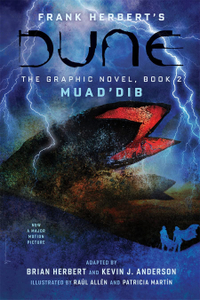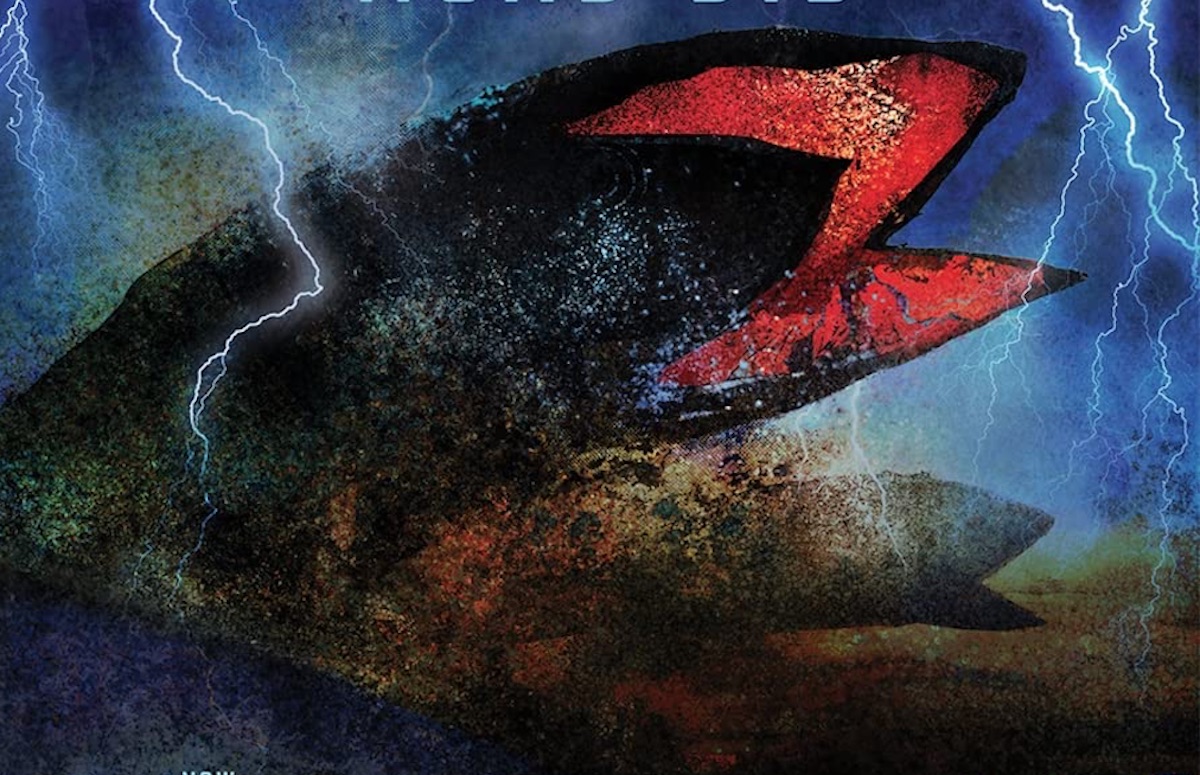
Back in late 2020, Herbert Properties LLC released the first volume of an ambitious graphic novel adaptation of Frank Herbert's seminal sci-fi novel, "Dune."
Written by Herbert's son, Brian Herbert, with longtime collaborator Kevin J. Anderson, "Dune: The Graphic Novel Book 1" represented the very first comic book treatment of the iconic 1965 masterwork.
This stunning 160-page hardcover was a fan favorite and certified bestseller, adorned with captivating artwork courtesy of Spanish illustrator Raúl Allén, letterer Patricia Martín, and included gorgeous cover art by the Eisner Award-winning artist Bill Sienkiewicz.
Now comes "Dune: The Graphic Novel, Book 2: Muad' Dib," the next installment of their prestige-format "Dune" adaptation, which is about to be released on Aug. 9 with the same creative team attached to further explore this expansive tale of feuding royal houses in the far future. Check out our Dune streaming guide, too, if you're looking to watch the new film or its predecessor.
Related: How does new 'Dune' hold up to 1984's film and Frank Herbert's classic?
Dune: The Graphic Novel, Book 2: Muad’Dib $24.99 now $19.99 at Amazon
Go back to Arrakkis in this latest Dune graphic novel that explores the impact of Paul Atreides as Muad'Dib on the desert planet.
Here we pick up the saga as young Paul Atreides and his mother, the Lady Jessica, discover themselves stranded in the hostile deep desert of the planet Arrakis. Betrayed by the trusted Dr. Yueh and crushed by their greatest nemesis, the Harkonnens, Paul and Jessica must locate the mysterious natives of this harsh world, the Fremen, before they die of thirst and starvation.
Space.com spoke with Herbert and Anderson about the second book of their "Dune: The Graphic Novel" trilogy and learned of challenges arising during the creative process, the secret to their three-decades of "Dune" collaborations, and when we can expect the final volume for this visual transformation of the greatest sci-fi novel.
Get the Space.com Newsletter
Breaking space news, the latest updates on rocket launches, skywatching events and more!
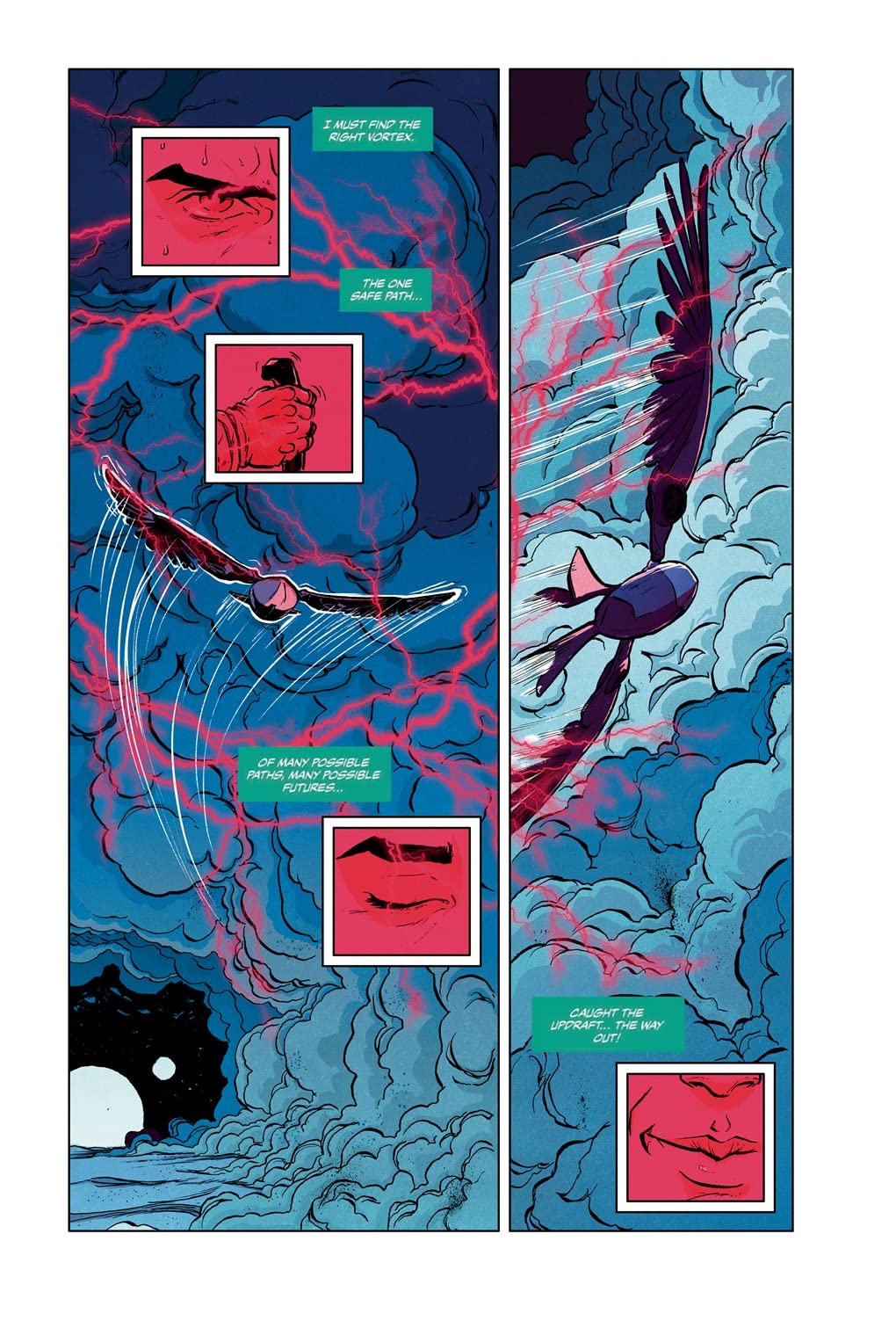
Space.com: Moving into this second installment of your "Dune" graphic novel trilogy, what different decisions were made for the art style, panel layouts, and colors?
Kevin J. Anderson: "When we looked at the first book, which won all kinds of awards and was a bestseller and we just loved how it turned out, our whole perspective on this project was that we wanted to do a faithful, scene-by-scene adaptation of Frank Herbert's book and what he wrote.
"And for the first part of Herbert's book, which is why it was so hard to film for so many years, it's a lot of introspection and dialogue and introducing things. But with the second part, that's when the afterburners really kick in. Paul and Jessica are lost in the desert and there are sandworms and they're with the Fremen.
"In the first volume of the graphic novel there's a lot of smaller talking head panels because that's what the book is. In working with Abrams and Raúl and Patricia, we said for the second volume we wanted to loosen it up a bit with bigger panels and be a little more spectacular. Just to give you a little hint, wait until you see Book 3 because we've got lots of stuff going on in it!"
Brian Herbert: "I think my father would be pleased to see this. One of the challenges that Kevin and I have had in working with all of my father's work, is that dad would tend to put big scenes in the background and we'd have to fill it out. In this case, the first hundred pages or so of "Dune" is a lot of introspection and teaching people language and customs so it's a difficult entry. And it was something dad did on occasion. He wrote books four to six in his series with a lot of talking heads and action in the background. "Dune's" first 100 pages are the reason it was rejected by so many publishers. Putting that into graphic novel format was a challenge."
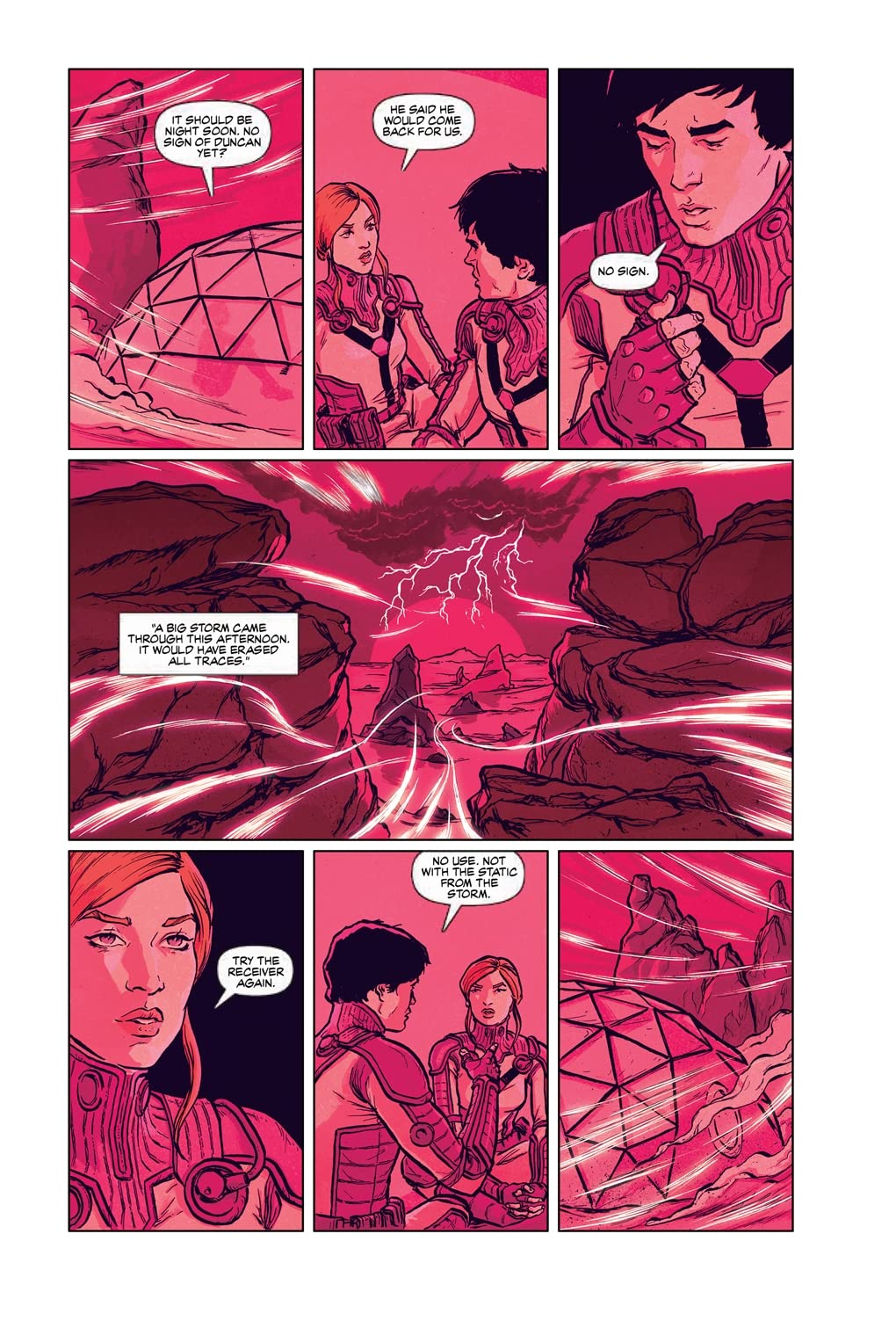
Anderson: "Recall to mind one of the most powerful, memorable scenes in the first part of "Dune"... "Paul, put your hand in the box." It's a super intense scene and as a reader you're sweating and you're going through how powerful it is. But think about it visually. It's a kid with his hand stuck in a box. Everything is happening in his head. It's really hard to show that with the depth and intensity that Frank Herbert wrote in the book. And that's just one example of the challenge of doing a visual version of such a cerebral book. We hope we pulled it off!"
Herbert: "One strength of Frank Herbert is that he was a professional photographer for years. He once told me when I was at his knee learning to write, he said that he liked to look at scenes through the lens of a camera. Well, a lot of times he pulled away from that camera. Kevin just came up with a good one, which is actually a photographic scene when you think about it.
"Dad would do that, and there's this beautiful poetry in the way he wrote and this beautiful imagery that the readers pick up. That's why when you see a movie based on "Dune" or graphic novels based on "Dune," you don't want to disappoint too many people as to what they've visualized in their mind. These graphic novels are just moving perfectly, transitioning from Frank Herbert's images to what readers have already seen in their minds."
Space.com: Is there a synchronicity with this Abrams graphic novel, the new "Dune" feature films, and your "Dune" prequel novel comic adaptations from Boom! Studios?
Anderson: "This graphic novel is separate from Denis Villeneuve's "Dune" movie that has come out and the second part that will be arriving. This is our thing. After we designed the book of the characters and uniforms and vehicles and cities, we cooperated with Boom!, which are doing a full adaptation of the "Dune" prequels that Brian and I wrote, "House Atreides," and now we're writing "House Harkonnen" and "House Corrino" as 12-issues each. So the designs we're doing for Abrams are the same ones that Boom! is using so there's a partnership going on there."
Herbert: "There's a new person at Boom! and we were just talking about the details of the musical instrument, the baliset, that Gurney Halleck carries. Well, the Abrams image is really good so we're seeing if we can put Boom! and Abrams together to track the design."
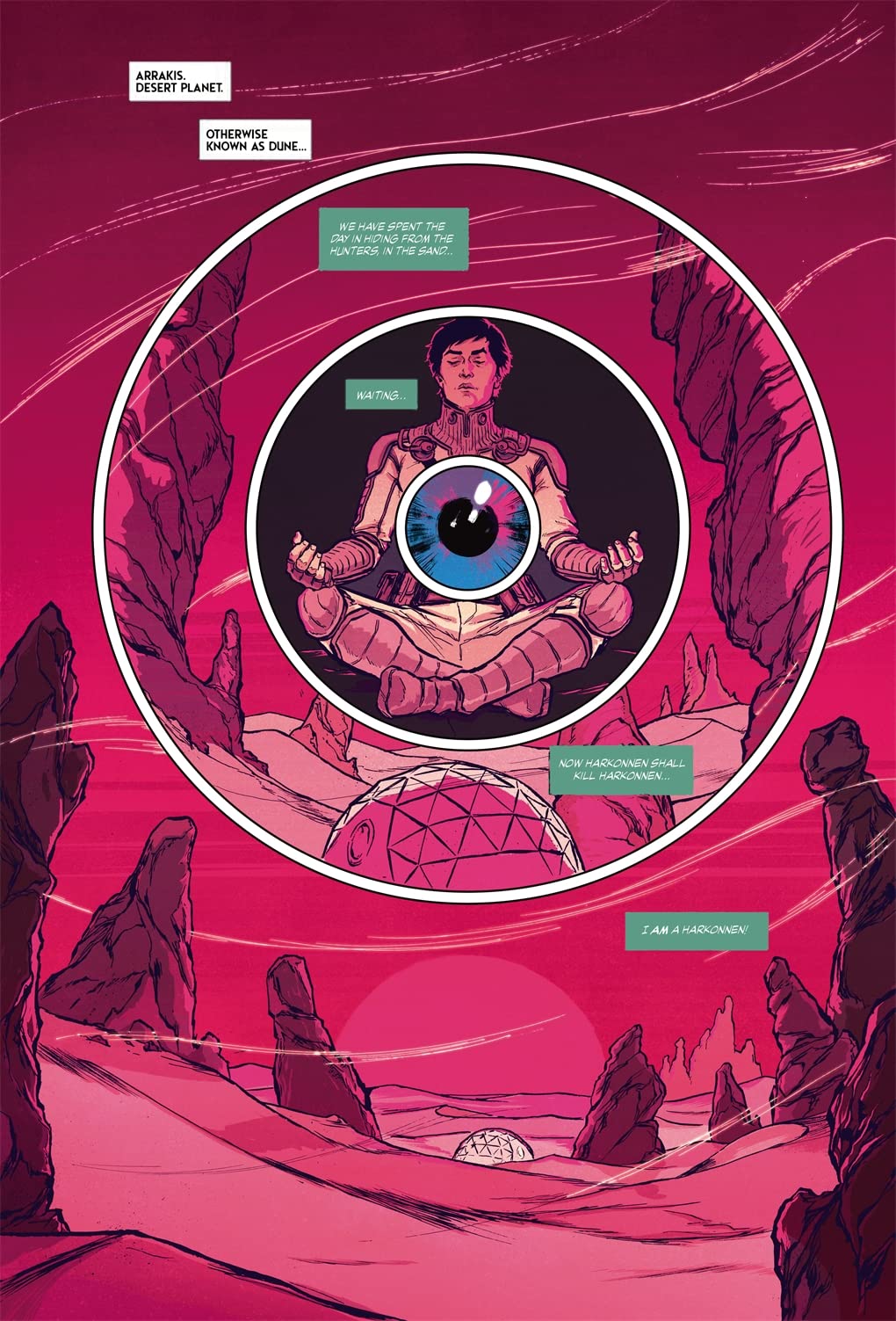
Space.com: What's the most fun about joining forces on this project and how do you divide up the creative process?
Herbert: "To start with, I gave Kevin an outline of the entire "Dune" novel and he has experience with graphic novels and laying out comics that I don't have. So we fill in different parts of this universe. I'm more of the contact person and sign the deals. I envisioned the entire comic and graphic novel scenario back when I was being told it had little or no value. I held out in all contacts I was signing with other parties and made sure we retained those rights. We each have different roles we're playing. I'm one of the managers of Herbert Properties, protecting my dad's legacy, but I also hire myself and Kevin as writers. And on these comics and graphic novels it's important that Kevin has this background that he does."
Anderson: "I have read "Dune" maybe twenty times, but when it came to adapting it scene for scene into a graphic novel, it was taking this book under an x-ray machine, really looking at it line after line and seeing how this connected with that. It just astonished me that I'm still discovering new things and new little details he planted that completely went past me before because they're so subtle. My admiration of the book just went up several notches."
Herbert: "It's like seeing a great classic movie, like "Casablanca." There are things in that movie that when you watch it after a year or two, you think, "Hey I didn't notice that before." And it's the same with Frank Herbert's "Dune." It will be read for 500 years or more."
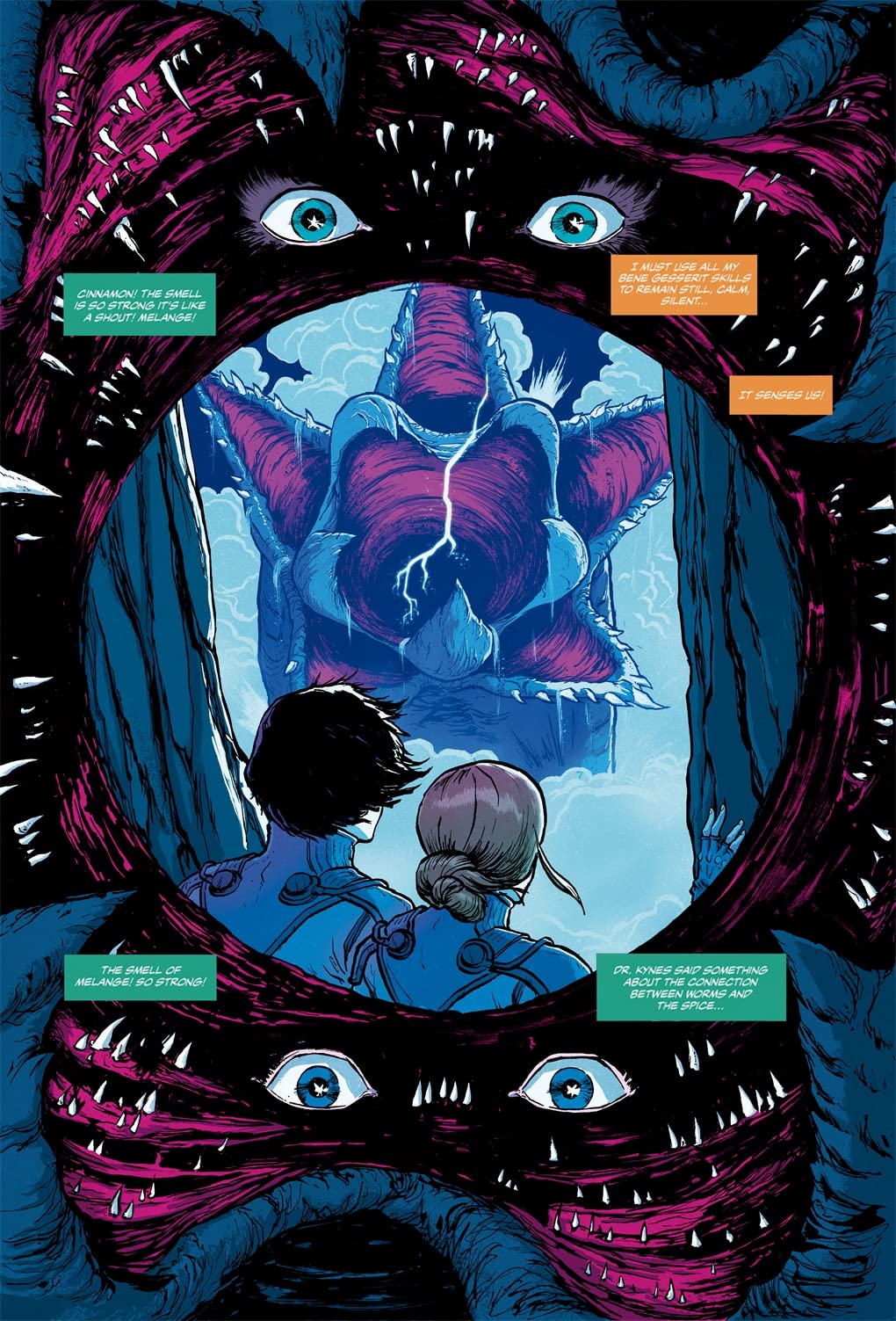
Space.com: What can you tell us about the final part of this graphic novel trilogy, "Dune: Prophet," that's due out in 2024?
Anderson: "We've finished the script for part three so it's in the can. Obviously the artwork takes much longer than the script and Raúl and Patricia are already starting to map out the pages. The timeline with Abrams is literally how long it takes. And Part 3 will be 30 pages longer. You can rest assured that the script is delivered and the artists have it and we'll be working on it!"
"Dune: The Graphic Novel, Volume 2: Muad' Dib" arrives on August 9.
Follow us on Twitter @Spacedotcom or on Facebook.
Join our Space Forums to keep talking space on the latest missions, night sky and more! And if you have a news tip, correction or comment, let us know at: community@space.com.
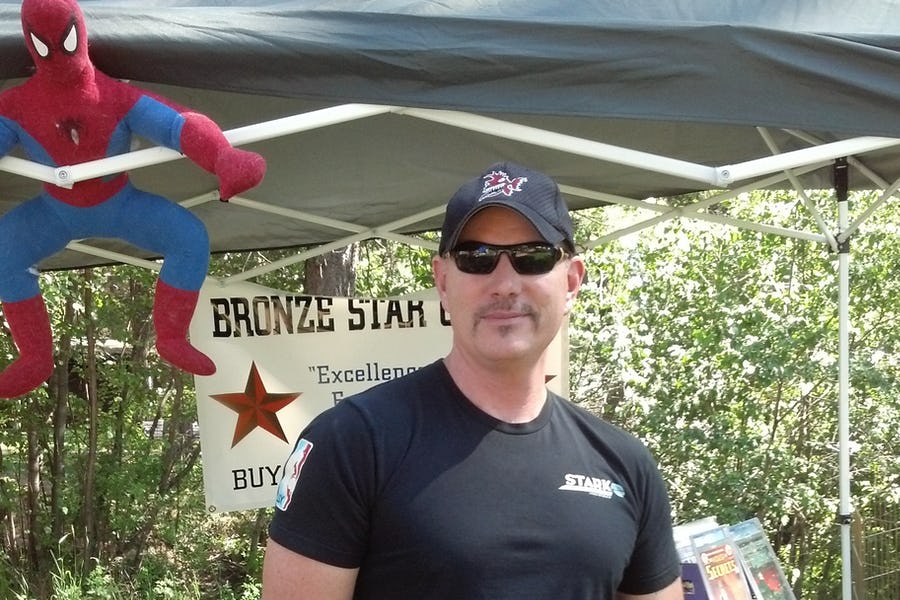
Jeff Spry is an award-winning screenwriter and veteran freelance journalist covering TV, movies, video games, books, and comics. His work has appeared at SYFY Wire, Inverse, Collider, Bleeding Cool and elsewhere. Jeff lives in beautiful Bend, Oregon amid the ponderosa pines, classic muscle cars, a crypt of collector horror comics, and two loyal English Setters.
